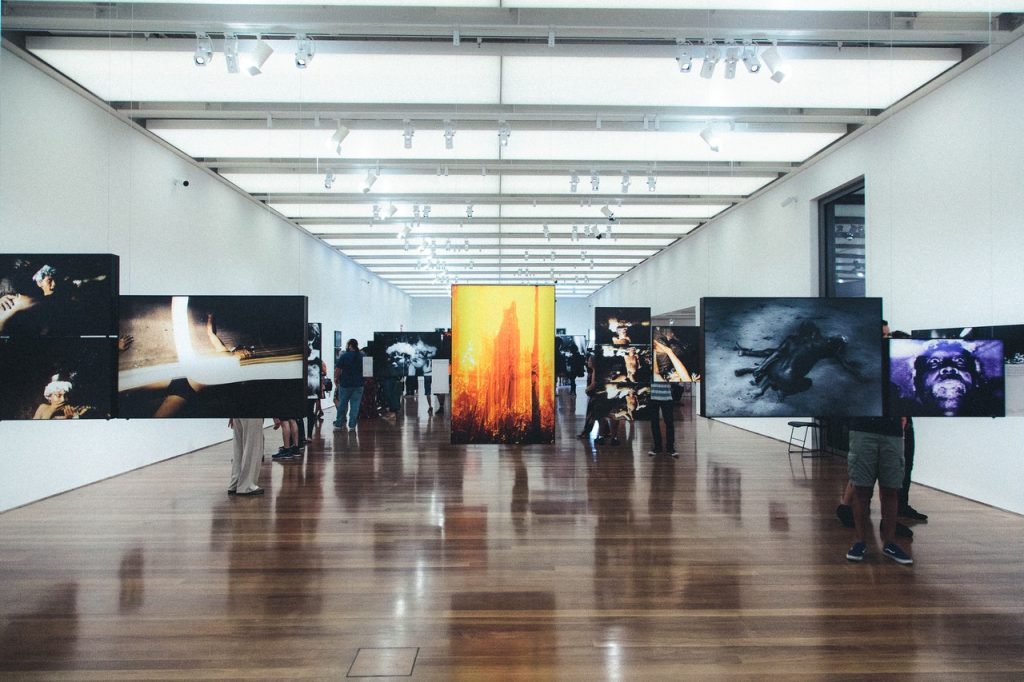They elevate the museum experience by offering information and enhancing artifact exhibits.
Museums have long welcomed visitors to observe various exhibitions and displays worldwide. Spaces are specifically designed to engage viewers, allowing them to delight in the splendor of the subject matter. With rapid technology changes and continued innovation happening each day, museums’ use of digital displays has become integral to their modernization, and technology will help ensure their continued relevance.
Modern digital signage has been utilized in many different museum settings, regardless of their format or subject matter. Video-display technology, whose uses range from informational signage to a means of displaying the artifact itself, has cemented itself as a paramount component of museum environments.
Even museums that don’t have artwork on display digitally, per se, like the Musée d’Orsay in Paris, France, or The Metropolitan Museum of Art in New York NY, still mount flatpanel displays in numerous other places. Thus, the opportunity for digital displays in museum settings is virtually universal.
Lobby Signage
Museum visitors typically arrive through a lobby, purchasing tickets and determining where to go first during their visit. Digital displays can be placed purposefully to inform and engage visitors seamlessly. For example, permanent displays mounted above ticket desks are essential to informing visitors of ticket prices; thus, they should be mounted at an angle optimal for queued-up ticket purchasers. Digital displays present the option to update the content on view easily, should changes ever be made to entry fees or should new prices for seniors, students, etc., be introduced.
Lounge spaces in museums can also utilize permanent digital displays to provide information about upcoming events and exhibits. This sort of marketing is essential, given that the audience—the group of patrons in the lounge—has already demonstrated interest by being there in the first place! If the museum uses targeted, modern and visually pleasing messages, visitors will be more likely to feel the memo applies to them and, therefore, they’ll consider returning to the space. (Because events and exhibits are usually time-sensitive, these displays, like those in the ticketing area, benefit from fast and easy message alteration and updating.) By the same token, menus in museum cafés often work best when they’re digital signs because they allow seasonal items, special events, etc., to be updated.
Digital displays can be used throughout a museum space to provide important and relevant information to visitors. And if video displays are to be used in entryways and
throughout gallery spaces to show directional information for exhibits, restrooms and the gift shop, floor stands are integral. Integrators should consider which floor stands would work best to meet signage needs while maintaining the museum’s aesthetic.
On that topic, it’s important carefully to select the displays utilized, considering the environment in which they’re placed and the resources necessary to maintain them.
Key factors to consider include their ability to be in direct sunlight, their capacity for 24/7 continuous usage, whether they have built-in media players and their power-consumption characteristics.
Modern-art museums and those devoted to visual-centered subject areas, such as film or photography, have led the charge in embracing digital-signage solutions for sharing content with viewers. With proper display selection, museums can create awe-inspiring imagery that inspires and informs visitors.
Immersive Displays
In some museum settings, visual technologies are used to create lasting impressions. The San Francisco Museum of Modern Art has used digital laser projectors for film-art installations. A recent exhibition included work from several filmmakers in numerous acoustic rooms. It has also used a combination of digital displays, proper mounts and sound architecture to render an immersive and memorable visitor experience with “The Chronicles of San Francisco,” which included a 70-foot-wide, direct-view-LED videowall canvas.
Another place using a combination of modern technologies to make meaningful messages is the GRAMMY Museum. Updates to displays have swept the facility swiftly into a place of continued innovation and heightened visitor enjoyment. Improvements to exhibits, such as “Mono to Immersive,” have transformed them from what had been a single screen and a button click to an immersive experience. Now, it employs touch technology on an interactive kiosk, which prompts video projected on four walls (thus surrounding the visitor) and a sound system.
Museums have long displayed relics of the past while educating the people of today. The addition of modern display technology has elevated museum experiences in countless ways. By bringing updated messaging and new, immersive experiences to visitors, museums will continue to benefit their patrons, serving as a nexus for the old and the new.
To read more from Sound & Communications, click here.
